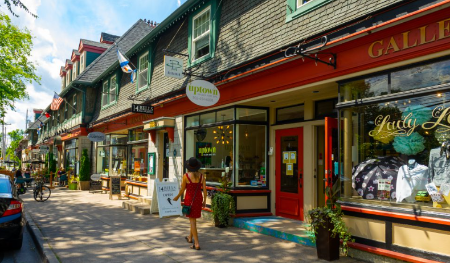North End Halifax, Nova Scotia
North End Halifax: has become a trendy place to call home
North End Halifax is a neighborhood of Halifax, Nova Scotia occupying the northern part of Halifax Peninsula right away north of Downtown Halifax. The location as soon as consisted of historical Africville, and parts of it were badly harmed in the Halifax Explosion during World War I. An area with strong African Nova Scotian roots, more just recently the area has actually undergone gentrification.
The northern part of the Halifax Peninsula consists of thin soil arising from glacial deposits, as well as protrusions of a dark sedimentary shale referred to as ironstone. The whole peninsula has no substantial surface area water, unlike the locations northeast and southwest of Halifax Harbour (the Eastern Shore and South Shore respectively).
At 60 m in elevation, Citadel Hill is the highest point on the peninsula and when integrated with the extensive undeveloped parkland of the North Common, creates a physical border that separates the various areas. Fort Needham is another glacial drumlin situated in the heart of the North End. Gottingen Street is the commercial and entertainment heart of the North End. It is home to numerous stores, bars, clubs, and efficiency places.

The locations of Gottingen Street, Creighton Street, and Maynard Street was typically home to a large middle-class African Canadian population, while lower-income households lived nearby in Uniacke Square. Much of the black resident operated organizations, or were working experts. The North End has long been seen as a center of education, commerce, religion, and entertainment amongst African Nova Scotians. However, unchecked gentrification of the North End has altered the area's demographics substantially.
In recent years, the North End has become a popular destination for Halifax's growing university population. As the prices of apartment or condos closer to Dalhousie University and Saint Mary's University continue to increase, and as the cost of transport has fallen due to the introduction of the U-pass, students are discovering more affordable lodgings in the North End. This has spawned a flourishing creative community, with lots of painters, musicians and authors being tempted to this section of the city, at the expenditure of some long time residents.There is still a Black existence in the community, although it is diminishing and for the most part restricted to the boundaries of the public real estate surrounding Uniacke Square. Since 2019, only a handful of houses are still owned by Black households.
The location has become home to organizations such as Bloomfield Centre, North By North End, Grainery Food Co-Op, the Anchor Archive Zine Library, Turnstile Pottery Cooperative, Nova Scotia Youth Project, and the North End Community Gardening Association. Strategies are now under way for the redevelopment of Bloomfield Centre.
The previous Bloomfield School is now Bloomfield Centre, a local arts neighborhood. However, the North End is often connected to problems of criminal offense and hardship. It is deemed a mainly blue collar, African Canadian, working class area amongst older white citizens. Hugh MacLennan, in his 1941 book of the Halifax Explosion, Barometer Rising explained the North End as having actually always been "Catholic and bad". The proximity of the CFB Halifax naval base and numerous adjunct centers, as well as the Halifax Shipyard, has actually added to a large working class population living and working in the area.
If you’re planning a trip to North End Halifax, there are a few resources that can help you make the most of your visit. The Nova Scotia Visitor Information Centre is a great place to start. They have six locations throughout the province, including one in Halifax, where you can drop in for information on Nova Scotia’s travel experiences. Their friendly and knowledgeable travel counsellors and tourism ambassadors can help you plan your trip and make the most of your time in Halifax.
Another useful resource is the Tourism Nova Scotia website. Here you can find information on visitor centres, travel guides, and top attractions and experiences throughout the province.
Also visit Melville Cove